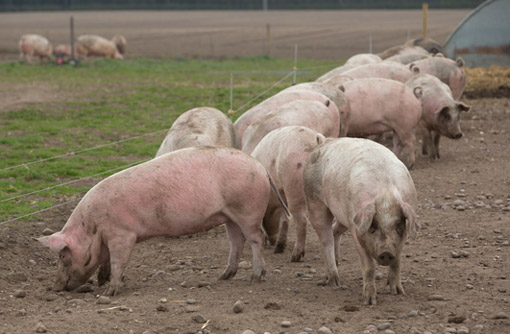Livestock Monthly must do’s

PIGS
Stimulating gilt appetite
Pig producers need to ensure the gilt consumes enough nutrients to produce an ample supply of milk for her litter and to maintain her body condition, says Richard Bows, BPEX knowledge transfer manager. “The greatest challenge is stimulating the gilt to eat a sufficient quantity,” he says. “A gilt’s appetite can be influenced by events prior to farrowing, as well as how well she is managed while lactating.” For more information on how to manage these challenges, download Knowledge Transfer Bulletin no.7, The first lactation: a feeding review from www.bpex.org.uk/2TS/publications
Semen storage in winter
Pig producers should take care in winter to prevent AI semen chilling to below 15C – the optimum storage temperature is 17C, with variation of no greater than 2C, says Angela Cliff, BPEX knowledge transfer manager. “Typical risk points include:
1. The semen delivery site, especially when outside working hours
2. Overfull semen storage containers
3. Incorrect storage temperature – this should be monitored daily with a max-min thermometer
4.Transfer of semen to the service area
5. Storage of semen in the service area
For more information, download Action for Productivity 30: Semen storage and handling from www.bpex.org.uk/2TS/publications
Beef and sheep
Make sure farm dogs are correctly wormed
Parasite infections caused by canine tapeworms are costing the sheep industry millions, according to EBLEX’s Dr Phil Hadley.
“In 2012, almost £5m was lost due to sheep measles being found in sheep post-slaughter, while more than £1m was lost due to livers being rejected because of bladder worms,” he said.
“Farmers are losing out as infected livestock fail to reach target specification and achieve lower values.
“Dog owners should make sure they follow correct and routine worming procedures, and ensure dogs are prevented from scavenging carcasses.”
Further information can be found in the EBLEX manual Minimising Carcase Losses for Better Returns.
Improve cattle building design
Improving existing buildings, or designing high-standard new builds, has a lasting positive effect on health and productivity, advises EBLEX’s Mary Vickers.
“The design should maximise ventilation potential on a still day, without exposing livestock to elevated air speed when the wind is blowing,” she said.
“When animals are inside, it is useful to use smoke pellets to show the flow of air. Ideally smoke will rise towards the ridge and be cleared from the building in one minute.
“It’s crucial to calculate the inlet and outlet areas correctly – the EBLEX BRP+ document Better Cattle Housing Design gives guidance on this.”
Dairy
Servicing and body condition scoring
As many autumn-block herds will be nearing the end of their calving period, preparations for the service period can be aided by making sure new staff members are up to speed on heat detection and any non-cyclers are being targeted early.
DairyCo extension officer Nicky Fair says establishing early records for reference heats prior to the service period is essential for achieving good submission rates. To help train new staff members, she recommends looking at chapter 6 of DairyCo’s PD+ as this has lots of tips on heat detection.
Spring-block herds will be planning the drying-off period. Ms Fair says: “This is a really important time to condition score your cows, as it gives you an early warning of those outside the target range who need extra attention during the dry period and calving.” She says it’s worth revisiting condition scoring guidelines to “keep your eye in” – the DairyCo body condition scoring fact sheet takes you through a step-wise process to make body condition scoring easier on farm.
Soil conditions
Weather conditions this summer have given many soils the perfect opportunity to recover from last year’s monsoon – but some will still need attention, says DairyCo extension officer Piers Badnell.
The decent summer and the natural processes mean compaction in many areas has been significantly reduced. “However, there are exceptions – and it is worth digging to see. Some exceptions tend to be soils with a low clay content such as red sandstone soils, which are suffering from plated structure and clear horizontal layers that restricted root growth all summer.”
Often the top few inches have recovered well, but compacted layers 10-20cm deep, caused by machinery damage last year, are still evident. “In drier areas where worm activity has been poor, these blocky structures haven’t broken up. When soils start to wet up again this autumn they are likely to hold water and will be very prone to further poaching and machinery damage.”
However, he says soil conditions are still good for taking action this autumn – especially for maize growers who didn’t get a chance to subsoil before drilling. “Have a dig and look for blocky structures still present post-summer – if present, lifting/subsoiling or aerating (if they are at the surface) makes sense.”
More information of grassland management can be received through DairyCo’s e-newsletter Forage for Knowledge.
